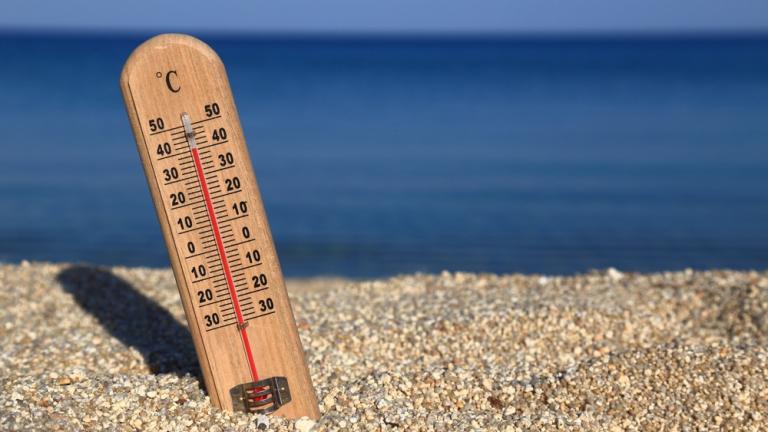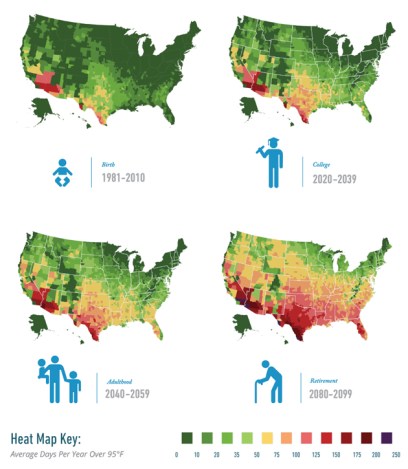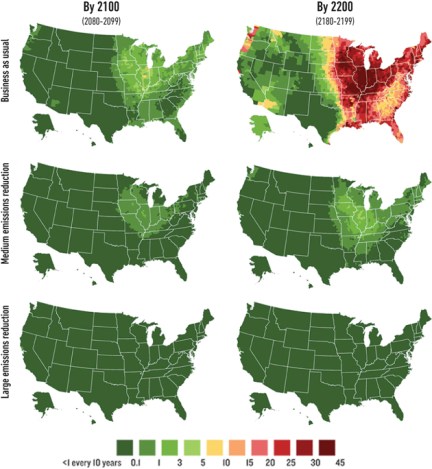One of the main difficulties in getting people to care about climate change is that it can be hard to notice on a daily basis. But the prospect of sweating profusely through your golden years? That’s more arresting.
If you’re aged 4-33 right now, the map above shows you how many very hot days — those with temperatures over 95 degrees Fahrenheit — you’re likely to experience by the time you’re elderly. It comes from a new report by the economics research firm Rhodium Group, which was commissioned by former NYC Mayor Michael Bloomberg; Henry Paulson, the Republican Treasury secretary under George W. Bush; and Tom Steyer, the billionaire Bay Area entrepreneur and environmentalist.
The report’s primary focus is the economic impact climate change will have on the U.S., and the dollar figures are just as extreme as the temperature data: up to $507 billion worth of property below sea level by 2100, and up to $108 billion per year in property damage from hurricanes. Meanwhile, the report predicts a 73 percent decline in crop yields in some parts of the Midwest by 2100, decreases in labor productivity due to high temperatures, and a range of other regional changes that will tend to depress economic activity.
The report’s projections for future climate changes were authored by two of the country’s top climate scientists, Robert Kopp of Rutgers and Michael Mastrandrea of Stanford. The economic modeling was led by UC-Berkeley environmental policy analyst Solomon Hsiang, whose previous work has found that global warming could lead to a 50 percent increase in violent conflict worldwide.
Another compelling chart from the report is the one below, which shows the number of days per year when the heat and humidity are too high for humans to be safely outside. If no action is taken to reduce emissions, the map shows that by 2200, going outside could be unsafe for over 10 percent of the year in much of the eastern U.S.:
 This story was produced as part of the Climate Desk collaboration.
This story was produced as part of the Climate Desk collaboration.





